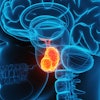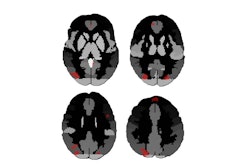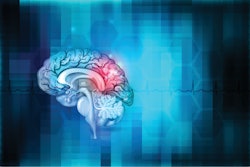Functional MRI (fMRI) shows that exercise really does improve a person's mood -- and also the brain's functional connectivity, researchers have reported.
The findings offer a "more nuanced neurobiological model for the therapeutic effects of exercise," wrote a team led by Li-Kun Ge, PhD, of the Chinese Academy of Sciences in Beijing, China. The group's results were published July 23 in the International Journal of Clinical and Health Psychology.
Research has shown that vigorous aerobic exercise affects an individual's mood -- reducing negative moods such as anxiety, depression, tension, and anger and increasing positive effects such as energy and well-being, the investigators explained. A number of studies have explored the neural mechanisms that support these mood changes associated with exercise, but the role of the lateral and medial amygdala in particular has not been thoroughly investigated.
To fill the knowledge gap, the team conducted a study that included 76 people between the ages of 18 and 22 who were divided into two groups: an exercise cohort and a control group. The exercise group underwent a 30-minute, moderate-intensity intervention, while the control group completed a reading task at a physical resting state. All participants underwent resting-state functional MRI (rs-fMRI) before and after the interventions; their moods were assessed before and after using the Positive and Negative Affect Schedule (PANAS) and Abbreviated Profile of Mood States tools. Finally, the investigators assessed each individuals' "Group × Time" interaction on functional connectivity data taken from medial amygdala and lateral amygdala subregions.
Ge and colleagues found the following:
- Exercise-induced mood improvements correlated with significant Group × Time interaction effects on functional connectivity, with a predominance in the right hemisphere.
- Enhanced connectivity of the right medial amygdala with the orbitofrontal cortex, parietal, and cerebellar regions correlated with increased self-esteem.
- Enhanced connectivity of the right lateral amygdala with the orbitofrontal cortex and striatum correlated to a wide spectrum of improvements, such as reduced tension and anger and increased gusto.
The bottom line? To boost your mood, get off the couch.
"Acute exercise improves mood via distinct, lateralized neural pathways centered on different amygdala subregions," the group concluded, noting that "the medial amygdala and lateral amygdala play complementary roles in automatic emotion regulation."
The complete study can be found here.




.fFmgij6Hin.png?auto=compress%2Cformat&fit=crop&h=100&q=70&w=100)




.fFmgij6Hin.png?auto=compress%2Cformat&fit=crop&h=167&q=70&w=250)











